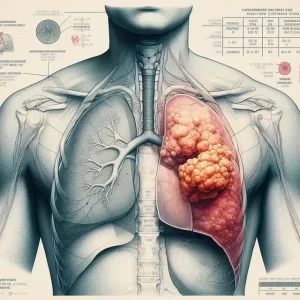Up to 91% of Healthy Diets Can Include Ultra-Processed Foods
- FDA Approved Opdualag: The First Immunotherapy Targeting LAG-3
- Cutaneous Reactions Following COVID-19 Vaccination: A Review of the Evidence
- Brief Intermittent Exercise Reduces Heart Disease and Death Risk
- Personalized Lung Tumor Chips Assess PD-1 Therapy Response
- Study Shows Prior Infection Offers Strong Immunity to Original COVID-19 Strain
- Chinese Food Products Dominate Korean Tables Amid Safety Concerns
U.S. Department of Agriculture Scientists Find that up to 91% of Healthy Diets Can Include Ultra-Processed Foods
- AstraZeneca Admits for the First Time that its COVID Vaccine Has Blood Clot Side Effects
- Was COVID virus leaked from the Chinese WIV lab?
- HIV Cure Research: New Study Links Viral DNA Levels to Spontaneous Control
- FDA has mandated a top-level black box warning for all marketed CAR-T therapies
- Can people with high blood pressure eat peanuts?
- What is the difference between dopamine and dobutamine?
- How long can the patient live after heart stent surgery?
U.S. Department of Agriculture Scientists Find that up to 91% of Healthy Diets Can Include Ultra-Processed Foods.
A recent study led by scientists at the U.S. Department of Agriculture’s Human Nutrition Research Center on Aging at Tufts University has revealed that up to 91% of calories in a healthy diet, as measured by the NOVA classification, can be sourced from ultra-processed foods while still adhering to the recommendations of the 2020-2025 Dietary Guidelines for Americans (DGA).
Researchers at the USDA’s Human Nutrition Research Center on Aging in Tufts University conducted a study showcasing that it’s possible to integrate up to 91% of calorie intake from ultra-processed foods within a healthy diet, aligning with the guidelines outlined in the 2020-2025 Dietary Guidelines for Americans (DGA). However, future research will assess potential adverse health implications.
Julie Hess, a nutritional scientist at the USDA’s Human Nutrition Research Center on Aging, remarked, “This study serves as a proof of concept, demonstrating a more balanced approach to healthy eating where the inclusion of ultra-processed foods is a viable option. According to current dietary recommendations, the nutritional composition of foods and their placement within food categories are more critical than the degree of food processing.”
In this study, scientists employed the NOVA classification system to determine which foods fell into the category of ultra-processed. The NOVA system, introduced in 2009, is the most widely used scale in nutritional science for categorizing foods based on their level of processing.
According to the NOVA scale, foods are categorized into four groups based on their level of processing:
1. Unprocessed or minimally processed foods.
2. Processed cooking ingredients.
3. Processed foods.
4. Ultra-processed foods.

To test the feasibility of using ultra-processed foods to construct a healthy diet, USDA scientists and collaborators created a menu guided by “MyPlate,” containing breakfast, lunch, dinner, and snacks for a seven-day, 2000-calorie food pattern. The foods included in the menu aligned with the portion sizes of fruit, vegetables, grains, protein foods, and dairy groups recommended in the 2020 DGA.
The scientists selected foods with low saturated fat and added sugar content while still providing adequate micronutrients and macronutrients. Some of the ultra-processed foods used in the menu included canned legumes, instant oats, ultra-filtered milk, whole-grain bread, and dried fruits.
Hess stated, “We used the Healthy Eating Index to assess dietary quality since it aligns with the key recommendations of the DGA. The menu we devised scored an 86 out of 100 on the 2015 Healthy Eating Index, meeting most thresholds except for sodium (exceeding recommended levels) and whole grains (falling below recommended levels).”
While this study offers valuable insights, more work is on the horizon. Scientists acknowledge that some observational studies suggest potential associations between ultra-processed products and adverse health outcomes, prompting them to delve deeper into this issue.
This study underscores the roles of various foods in constructing a healthy diet, emphasizing the need for further research in this field, particularly intervention studies.
The full details of the research have been published in the Nutrition Journal.
U.S. Department of Agriculture Scientists Find that up to 91% of Healthy Diets Can Include Ultra-Processed Foods
(source:internet, reference only)
Disclaimer of medicaltrend.org
Important Note: The information provided is for informational purposes only and should not be considered as medical advice.



